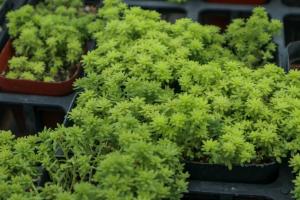When to Stop Watering Newly Planted Trees
Newly planted trees need consistent and adequate water to establish their roots and survive. However, too much water can also be detrimental and cause root rot or other issues. So, when should you stop watering newly planted trees?
First Year is Critical
The first year after planting is critical for the survival and establishment of trees. During this period, trees need more water than established trees to support root growth and develop a strong root system. Most young trees need about an inch of water per week during the growing season, provided either by rainfall or irrigation.
Consider the Soil and Climate
The frequency and amount of water your newly planted tree needs will depend on various factors, such as soil type, drainage, temperature, and humidity. If the soil drains well and is moist, you may only need to water your tree once a week. If the soil is heavy and retains water, you may need to water less frequently. In hot and dry climates, you may need to water more often, whereas in cooler and humid climates, less frequent watering may be sufficient.
Check the Soil Moisture
The easiest way to determine whether your tree needs water is to check the soil moisture. Insert a screwdriver or soil moisture meter into the soil around the root ball, 6 to 8 inches deep. If the soil is dry, it's time to water. If it's moist, wait a few days before checking again. Overwatering and underwatering can both cause problems, such as yellow leaves, poor growth, or wilting, so try to maintain consistent soil moisture.
Adjust Watering as Needed
As your newly planted tree grows and develops its root system, its water needs will change. After the first year, you can reduce the watering frequency but increase the amount of water per session. Also, observe your tree for signs of stress or overwatering, such as wilting foliage or slow growth. Adjust your watering schedule accordingly to ensure your tree stays healthy and vigorous.
Stop Watering Before Winter
As winter approaches, you should gradually reduce the amount of water you give to your newly planted tree. This will help it harden off and prepare for dormancy. Stop watering altogether once the ground freezes, as excess moisture can damage the roots and make the tree more vulnerable to winter injury. Resume watering in the spring when the soil thaws and the tree begins to grow again.
Conclusion
Knowing when to stop watering newly planted trees is crucial for their survival and long-term health. During the critical first year, ensure your tree gets sufficient water based on its soil and climate conditions. Check the soil moisture regularly and adjust your watering schedule as needed. Gradually reduce watering before winter and stop once the ground freezes. Following these guidelines will help your tree thrive and reach its full potential.

 how many times do yo...
how many times do yo... how many planted tre...
how many planted tre... how many pine trees ...
how many pine trees ... how many pecan trees...
how many pecan trees... how many plants comp...
how many plants comp... how many plants can ...
how many plants can ... how many plants and ...
how many plants and ... how many pepper plan...
how many pepper plan...
































